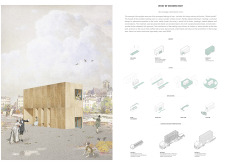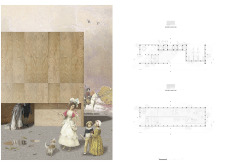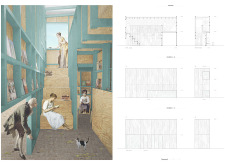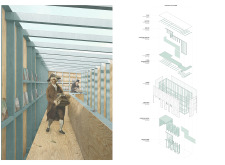5 key facts about this project
Distinctive Structural and Functional Components
The project consists of multiple modular components, each tailored for specific activities related to reading and community engagement. Key areas include a lounge space for casual reading and conversation, a dedicated book exchange area promoting the sharing of literature, and user-friendly design features that facilitate easy navigation and utilization of the space. The overall layout is intended to foster a comfortable environment conducive to individual reflection and communal interaction.
The use of plywood and wooden beams gives the structure strength while keeping it lightweight and portable, addressing the need for mobility. Furthermore, polycarbonate panels are integrated into the design to provide natural lighting while maintaining privacy, enhancing user comfort. The choice of painted wood accents introduces vibrancy, offering visual warmth that complements the primary materials.
Unique Design Features and Approaches
"What in Wooden Box?" differentiates itself through its emphasis on portability and adaptability. Rather than a static structure, it serves as an agile solution that can be deployed in various settings, from urban parks to community centers. This mobility aligns with a focus on sustainability, as the project considers the life cycle of its materials and promotes eco-friendly practices.
The design integrates elements that foster active participation from users. The book exchange box not only serves a functional purpose but also represents a cultural initiative encouraging community literacy and engagement. The spatial arrangement skillfully allows for both private reading experiences and collective discussions, reinforcing the dual nature of the project as both a solitary and collaborative space.
Readers interested in exploring the architectural plans, sections, and designs of "What in Wooden Box?" will find a comprehensive portrayal of its innovative approaches and structural details. The project exemplifies the potential of architecture to create spaces that serve both functional and social purposes. Further engagement with the project's presentation will provide deeper insights into its design and implementation, enhancing understanding of contemporary architectural ideas in community-oriented spaces.


























